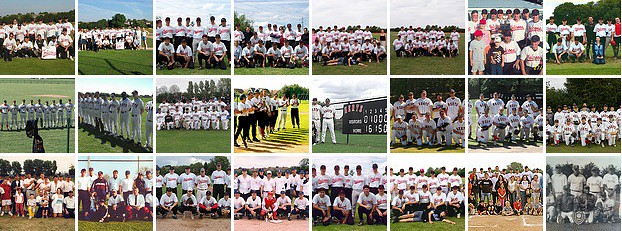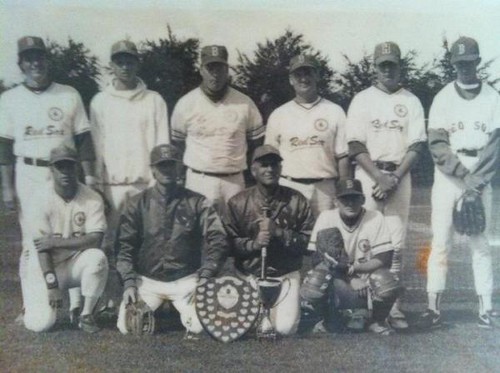written by Joe Gray
Maikel Azcuy (Essex Arrows) tied with Abelardo Salas (Herts Falcons) for the 2014 National Baseball League home-run title, with both players hitting three long-balls. This is the fifth year in which Azcuy has been joint or outright British home-run champion, which pushes him past the previous record mark of four titles set by Simon Pole (London Warriors), a British Baseball Hall of Famer. A list of all players with recorded stats in modern British baseball history, ranked by home-run titles, can be viewed here.
The 2014 crown is Azcuy’s third straight home-run title and his fourth in five seasons. His first came back in 2007, as a Croydon Pirate. Azcuy’s career home-run total now moves to 33, two shy of Pole’s all-time record.

Mike Osborn on the mound for the Herts Falcons at the London Mets (photo by Paul Holdrick)
The 2014 season also saw Michael Osborn (Herts Falcons), move to within 35 regular-season plate appearances of the 1000 mark. Only Alan Bloomfield (like Pole, a British Baseball Hall of Famer) has more than 1000 recorded plate appearances in modern British baseball history. Osborn, a two-way stand-out, has now played 17 seasons in the top tier.
Finally, Matt Gilbert (Southern Nationals) has becomes the first player in modern British baseball history to pass a half-century of recorded complete games, moving to a total of 54 with six this season. Gilbert now has 408 career strike-outs, and if he returns next season his first strike-out will draw him level with Cody Cain’s modern British record of 409.
About Project COBB
The Project for the Chronicling of British Baseball (Project COBB) is an online collaboration aimed at restoring the record of British baseball’s past and preserving its present. Click here to go to the Project COBB website.




